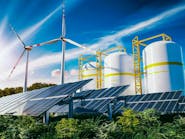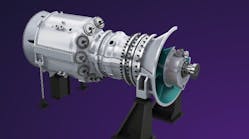The only liquified natural gas (LNG) export project federally permitted on the U.S. Pacific Coast so far has a new majority owner to lead the work toward eventual operations.
Glenfarne Alaska LNG signed a definitive agreement with the Alaska Gasline Development Corp. (AGDC) to lead work on the Alaska LNG project. Alaska LNG is designed to deliver North Slope natural gas to customers and utilities in the state while also exporting up to 20 million tons of LNG per year.
As part of the agreement, AGDC is divesting 75% of 8 Star Alaska, a subsidiary of AGDC managing all Alaska LNG project assets, to Glenfarne. Glenfarne assumes the role of Alaska LNG’s lead developer and will lead all remaining development work of the LNG project from front-end engineering and design (FEED) through to a final investment decision (FID).
AGDC will be a 25% owner of 8 Star Alaska as well as a partner to Glenfarne on the project.
“Alaska LNG will provide desperately needed energy security and natural gas cost savings for Alaskans and give Glenfarne unmatched flexibility to simultaneously serve LNG markets in both Asia and Europe through our three LNG projects,” said Glenfarne Chief Executive Officer and Founder Brendan Duval.
The U.S. Department of the Interior approved right-of-way permits for the Alaska LNG Pipeline Project in August 2020.
Alaska LNG’s three subprojects are an 807-mile 42-inch pipeline, the 20 MTPA LNG export terminal in Nikiski, Alaska, and a North Slope-based carbon capture plant to remove and store 7 million tons of carbon dioxide annually.
Phase one of the LNG project will initiate soon, prioritizing the development and final investment decision of the pipeline infrastructure required to deliver North Slope gas to Alaskans. The State of Alaska will retain a 25% share in 8 Star Alaska and have the option to invest up to 25% in any or all of the three 8 Star Alaska subprojects after a final investment decision.
The United States is currently the biggest exporter of LNG in the world. Natural gas is chilled to minus 260 degrees Fahrenheit to liquify and make it stable for shipping.
Most of the currently operational U.S. LNG liquefaction and export terminals are located on the Gulf of Mexico coast. Europe and Asia are leading off-takers of U.S. LNG.





